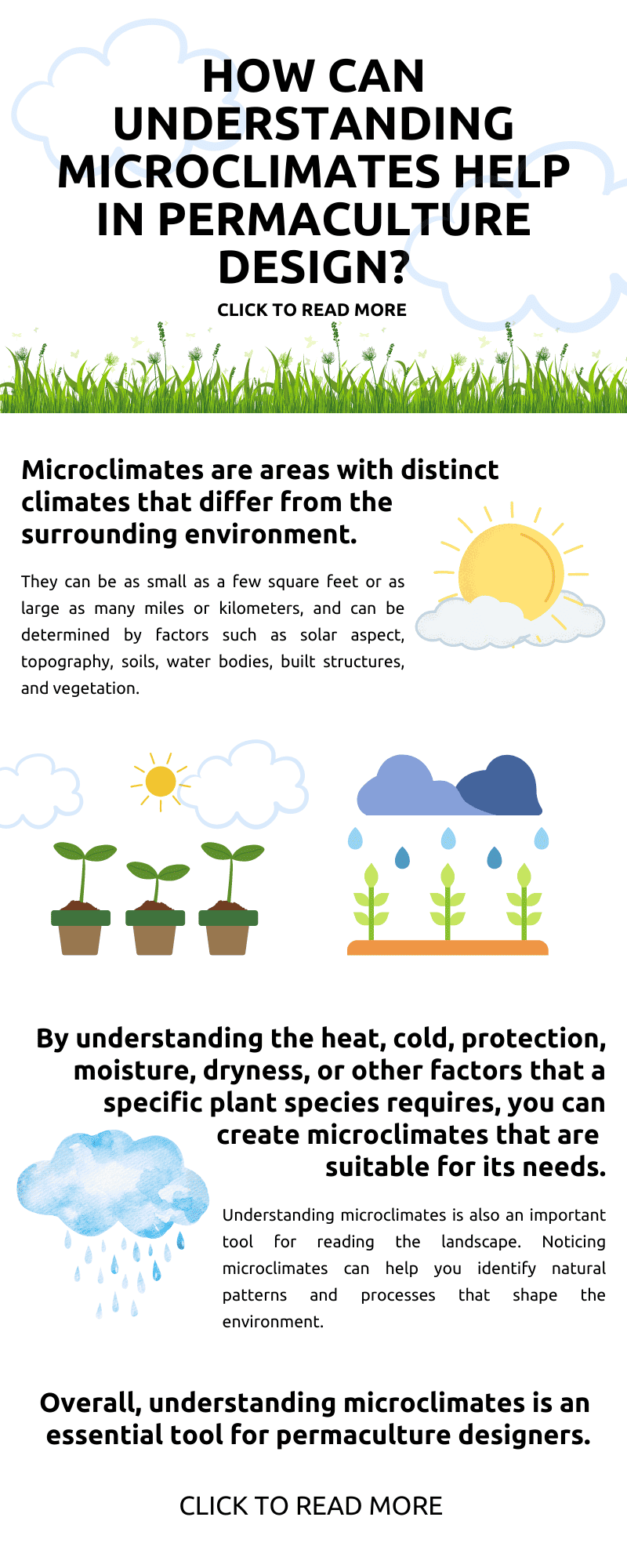
Are you interested in permaculture and sustainable design? If so, understanding microclimates is a crucial tool for creating thriving ecosystems that benefit both humans and the environment.
The Importance of Microclimates in Permaculture Design
Microclimates are areas with distinct climates that differ from the surrounding environment. They can be as small as a few square feet or as large as many miles or kilometers, and can be determined by factors such as solar aspect, topography, soils, water bodies, built structures, and vegetation.
Knowing the microclimate of a particular area can help you place plants in the most appropriate locations. By understanding the heat, cold, protection, moisture, dryness, or other factors that a specific plant species requires, you can create microclimates that are suitable for its needs. This, in turn, can help you create sustainable ecosystems that provide food, fiber, fuel, and other resources while preserving the natural environment.
Understanding microclimates is also an important tool for reading the landscape. Noticing microclimates can help you identify natural patterns and processes that shape the environment. For example, in the high desert of Arizona, the presence of the Manzanita plant indicates a "fire dependent" landscape. This plant requires fire as part of its regeneration, so if you see it in abundance on a south or west-facing slope, which is also the direction that prevailing summer winds come from, it indicates a potent wildfire sector. This information can be critical when assessing a piece of land and deciding where to locate a home.
Another example is the presence of the cottonwood tree in the Arizona Mountains and other desert areas. Cottonwood trees require constant moisture and tend not to send their roots deeper than 10 feet or 3 meters. Therefore, the presence of a cottonwood tree may indicate that there is water close to the surface or year-round moisture in an area. This can be useful when looking for a spring in the desert or assessing a piece of land.
Overall, understanding microclimates is an essential tool for permaculture designers. By being observant and noticing microclimates, you can create thriving ecosystems that benefit both humans and the environment. So, the next time you are assessing a piece of land or deciding where to place plants, pay attention to the microclimates around you and use them to your advantage.
Embed this infographic on your site.

